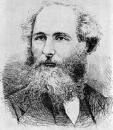| |

Home
Contact Info
Course Info
Calendar
Homework
Lecture Notes
|
|
|
|
PHY 218: Electricity and Magnetism II
Prof. S. Teitel stte@pas.rochester.edu ---- Spring 2017
Problem Set 9
Due Monday, April 24, by 4pm in the homework locker
- Problem 1 [5 points]
Consider two 4-vectors uμ and vμ. Prove that the inner product uμvμ is a Lorentz invariant scalar.
- Problem 2 [20 points]
Consider making a Lorentz transformation L1 from inertial reference frame K to the inertial reference frame K', where K' moves with velocity v1 in the x direction with respect to K. Then make a second Lorentz transformation L2 from frame K' to frame K", where K" moves with velocity v2 in the x direction with respect to K'. Find the velocity v3 with which K" is moving with respect to the initial frame K. This gives the relativisitic law of addition of velocities!
To find the answer, use the result that the matrix of the combined transformation L3 = L2L1 from K to K" is given by the product of the matrices for the transformations L2 and L1, i.e.
aμν(L3) = ∑σ aμσ(L2)aσν(L1)
Compute the above matrix and identify the velocity v3 by comparing it to the known form for a Lorentz transformation with velocity v3 in the x direction.
- Problem 3 [15 points]
Consider a point charge q at rest at the origin in an inertial frame K'. We know the electric and magnetic fields E'(r', t') and B'(r', t') of the charge in this frame K'. The frame K' is moving with velocity v in the x direction, as seen by an observor in the inertial frame K. Using the Lorentz transformation find the electric and magnetic fields of the charge as seen by the observor in frame K.
Show that the fields you get above are the same as we found from the Lienard-Wiechert potentials as applied to the case of a charge moving with constant velocity v. Remember, you have to transform both the fields and the coordinates, i.e. your result should give E(r,t) and B(r,t).
- Problem 4 [20 points]
Consider an infinitely long straight cylindrical wire of radius R, centered about the x axis. Suppose that in an inertial frame K there is a total current I flowing down the wire in the x direction and the wire also has a net charge per unit length λ. Assume the current I and the charge λ are uniformly distributed over the cross-sectional area of the wire.

a) We know that the 4-current jμ = (j, icρ) is a 4-vector, where j is the current density and ρ is the charge density. For the geometry described above, argue why Iμ = (Iex, icλ) also transforms like a 4-vector with respect to Lorentz transformations directed along the x axis. Does Iμ also transform like a 4-vector with respect to Lorentz transformations in directions perpendicular to the x axis? You must explain your answer, not just say "yes" or "no". Here ex is the unit vector in the x direction.
b) If I and λ are the current and charge per length seen in frame K, what are the current I′ and charge per length λ′ as seen in a frame K′ that moves with velocity vex with respect to frame K? In what situation is it possible to transform to a frame K′ in which I′ = 0? In what situation is it possible to transform to a frame K′ in which λ′ = 0?
c) Compute the electric and magnetic fields E(r, t) and B(r, t) in frame K from the current I and charge λ. Then compute the electric and magnetic fields E′(r′, t′) and B(r′, t′) in frame K′ by applying a Lorentz transformation to the fields E(r, t) and B(r, t) in frame K. Now compute the fields E′ and B′ in frame K′ directly from the current I′ and charge λ′ that you found in (b). Show that these two approaches give the same result for the fields in K′. For this part you may assume that the radius of the wire is vanishingly small.
|
|